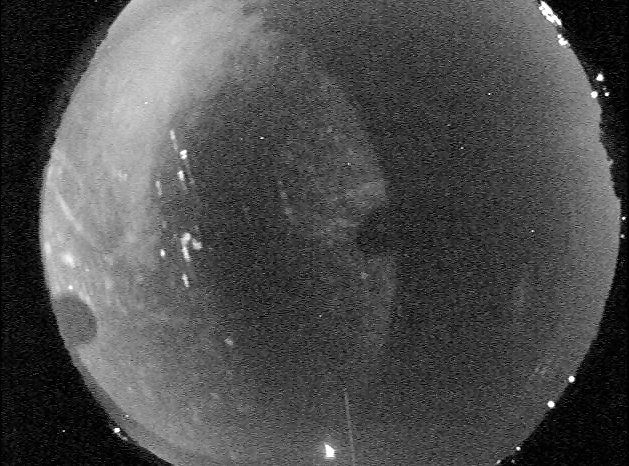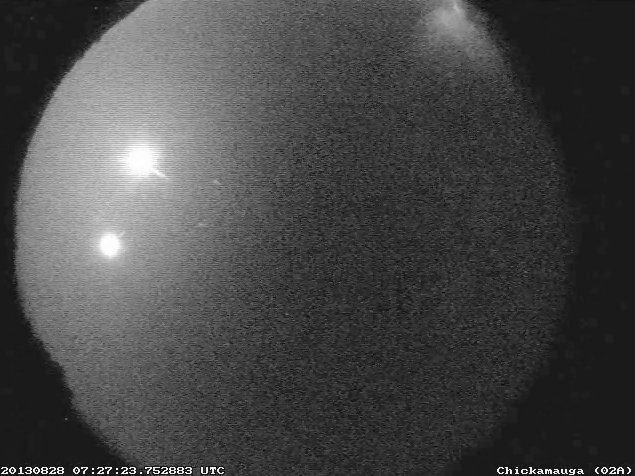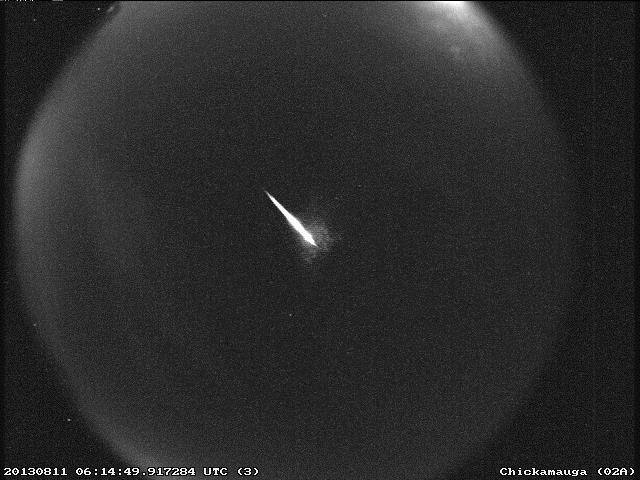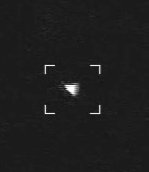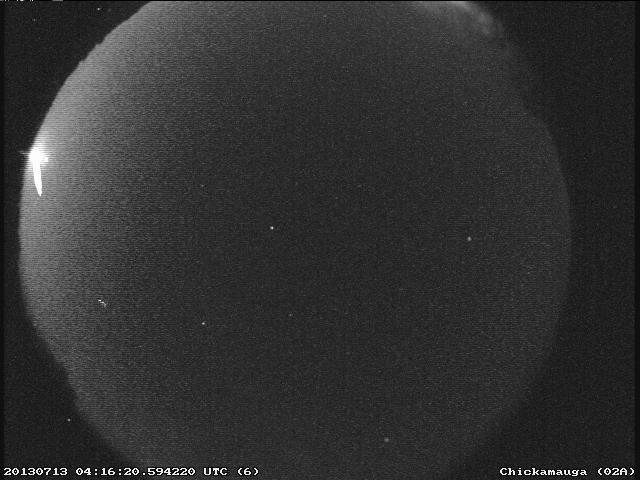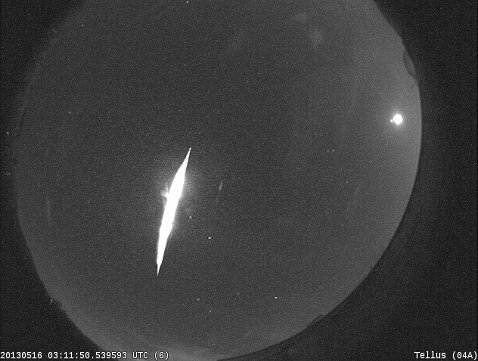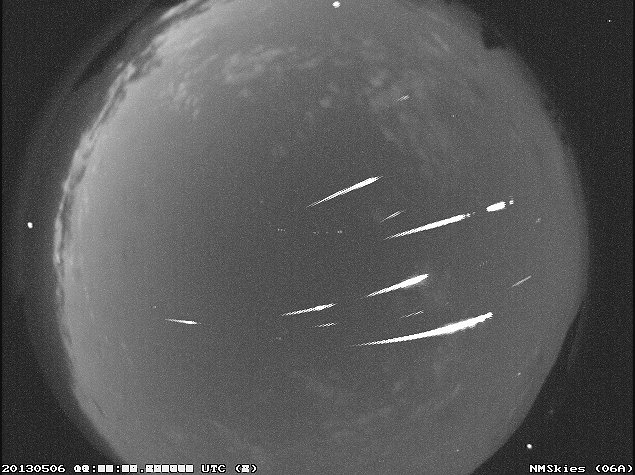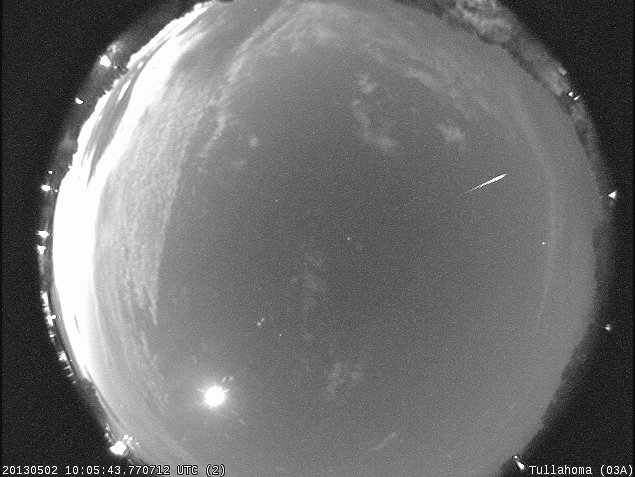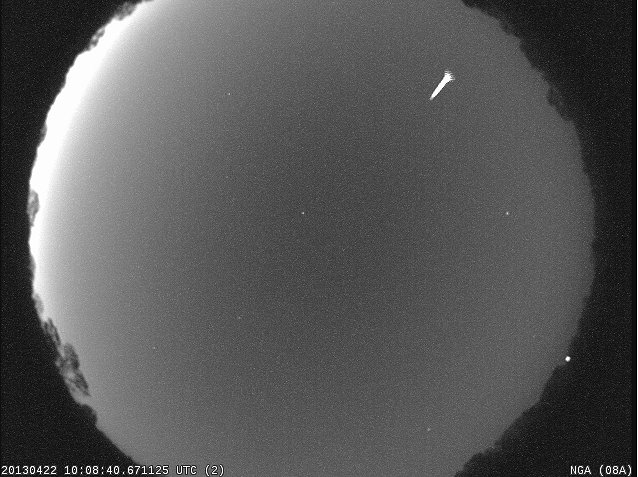Monday, Sept 9 at 8:18 PM Central Time, a baseball size fragment of a comet entered Earth’s atmosphere above Alabama, moving southwest at a speed of 76,000 miles per hour. At such speeds, fragile cometary material will not last long. Just 3 seconds after hitting the atmosphere, the meteor disintegrated 25 miles above the town …
Meteor Fragment Streaks Over Alabama and Georgia
